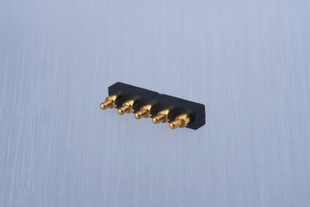source:Industry News release time:2021-11-23 Article author:sznbone Popular:POGO PIN

1. Straight guide wire
The straight guide wire is a universal standard specification. There is a 3-5cm soft section in front of the guide wire. It is also a guide wire designed for unique purposes. The soft section is 15-20cm long. The straight guide wire is made of stainless steel wire core. The welding method is different, divided into a fixed core straight guide wire and a theme movable core straight guide wire. If the surface of the guide wire is coated with a polytetrafluoroethylene plastic film, it is called a Teflon sheath straight guide wire. The main purpose of the straight guide wire is quite deep, and it is suitable for most practical operations of percutaneous puncture intubation.
2. J-shaped safety guide wire
The front of the guide wire is bent in a J shape, and its advantage is that it encounters a curved and deformed blood vessel during intubation, and the front of the guide wire is not easy to press against the inner wall of the blood vessel, thereby avoiding damage to the blood vessel. The front bending of the J-shaped guide wire is divided into large, medium and small. The new bend is suitable for blood vessels; the small bend can assist in adjusting the position of the intubation. When the common bile duct is moving towards a changed position, the catheter can be inserted into a branch of a different orientation by relying on the bending of the guide wire. The J-shaped guide wire also has a fixed core, a theme movable core, and a Teflon sheath.
3. The guide wire can be manipulated in the front position
This guide wire is also called Deflector, which is composed of a controllable guide wire that can be bent 180 degrees in front and a control door handle. After the tail of the guide wire is fixed to the door handle, the front of the guide wire can be straightened or bent by controlling the door handle. The deflector is mainly used for intubation of patients with large myocardial infarction, and can also assist in the development of selective and super-selective vascular intubation.
4. Disassemble and replace the guide wire used for the catheter
In the whole process of catheter treatment, it is often necessary to remove and replace the catheter. Relying on the guide wire to assist the removal of the catheter is very simple and convenient. The structure of the special guide wire for dismantling is the same as the general straight guide wire, but the length is increased to 2.6m.
In addition, there are some unique types of guide wires. For example, the guide wire for percutaneous transhepatic catheterization of the common bile duct has a soft stainless steel wire torsion spring in the front, and the main rod is a stainless steel wire with the same diameter as the torsion spring, which can make the main rod hard and has a strong applicable work. Ability to assist the catheter in online customer service for the frictional resistance of the epihepatic membrane and liver essence, and smoothly insert it into the common bile duct. There is another kind of guide wire, which has a large cone-shaped part behind the soft section, which is used to correctly guide the thicker catheter into the body.
Read recommendations:
M2383 2.5x19(7A)nucleic acid probe company
What are the advantages of pogo pin pogo pin connectors being widely used in electronic products?
What are the important functions of waterproof pin jack connectors